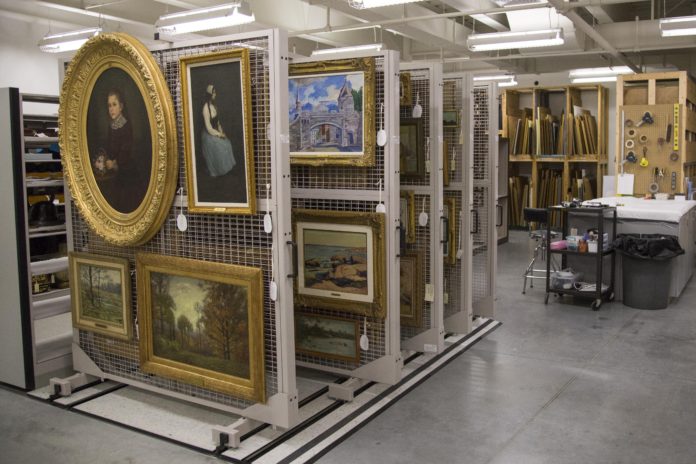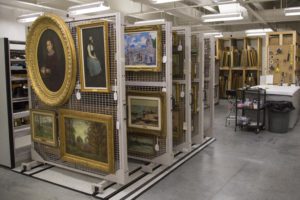

Peeler’s art collection has gone from struggling for funding to getting requests from princes about Andy Warhol photographs.
The art collection holds over 3,600 items and is a mixed collection of paintings, works on paper, sculpture, and furniture, but their strongest area is printed items. It has printed items from American artists but the collection has many printed items from Japanese artists as well. Some of the most recognized pieces are “Cowboy & Indians (Annie Oakley)” by Andy Warhol, “Untitled” by Alexander Calder, “Head” by Pablo Picasso, and “The Tale of Genji” by Kunisada II.
Craig Hadley, director and curator of exhibitions and university collections at DePauw University, said that Italian Prince Valerio Massimo’s personal assistant contacted Hadley on Friday and asked him how he could get a copy of the photograph Andy Warhol took of his mother Princess Atalanta Massimo, which DePauw’s art collection holds.
Despite its recent request from Prince Massimo, the art collection has not always had success. Before 2003, DePauw did not even have staff or a registrar to organize or take care of the collection, nor was the collection even in the same building. Registrar of University Exhibitions and Collections, Christine Anderson, was hired by DePauw in 2003. Anderson used her experience from working at the Smithsonian to help her reorganize and modernize the system DePauw used to keep track of their collection.
“When I got here, I had to look at the database and see what I was working with. The program they had was weird because it was just a list that said artist, title, country and there was no image,” Anderson said. Each piece of art is typically catalogued with a corresponding number, which was missing from the former art database.
After Anderson was hired, she started turning the collection around, both growing and organizing it. “In the early 2000’s we then shifted from just collecting everything that came through the doorstep to focusing on exhibitions. When Peeler was built, we had 8,000 square feet of new exhibition space,” Hadley said. “So for about ten years, there was a strong emphasis on public display and exhibition.”
Now, the collection is entirely catalogued and stored in the Peeler basement with the new cataloguing system allowing for easy location of an item. “We could pull all those [art pieces in different categories] out and show them to a class. We couldn’t do that five years ago,” Hadley said.
Anderson and Hadley are in the process of getting the museum accredited by The American Alliance of Museums, a national organization that oversees museums in the Midwest. However, the accreditation is a tedious process. The department has already been preparing for about three years for the application, and its next step is a visit from reviewers. The whole process will not be completed until 2018, and even at that point, there is no guarantee that Peeler will pass the test.
Accreditation would make it easier for DePauw to borrow an object or exhibition from another university or museum. Moreover, accredited museums have a higher success rate with grant approval. Students would also benefit because those who intern or work at Peeler would be able to say they worked at an accredited museum.
The DePauw art collection is generating more praise, and Anderson said many professors are taking students to the exhibits constructed with pieces from the art collection.
Vocal majors were recently taken there to read the art inscriptions in order to work on their French pronounciation. “It’s a nice art collection for such a small school,” said junior Courtney Feiler.
***Correction: The article previously incorrectly stated the Peeler Art Collection was considered for sale. The University has not considered selling the collection.


